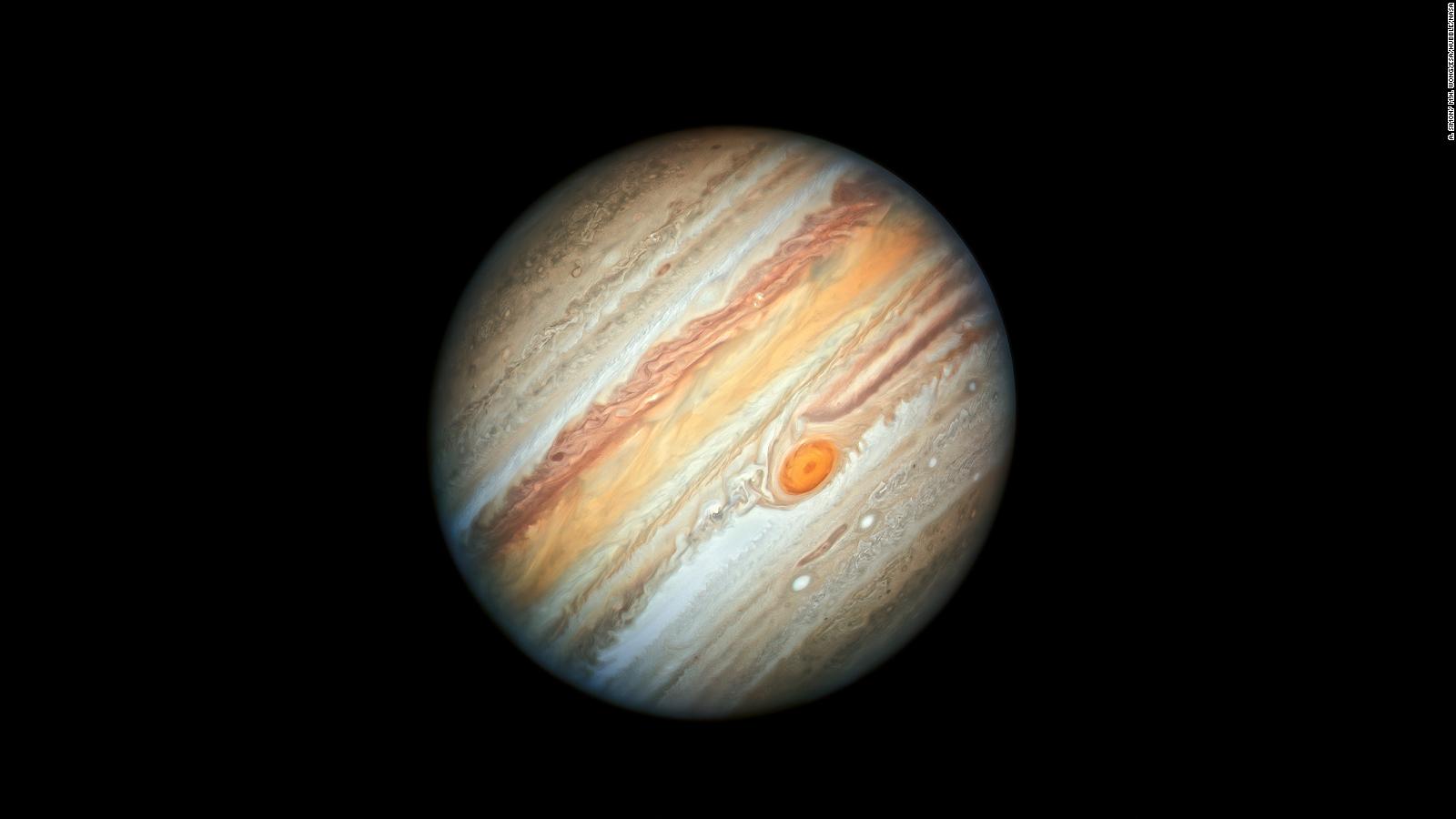The power of combining three different ways of observing Jupiter -- even a ground-based telescope on Earth that's millions of miles away -- lies in different wavelengths.
Hubble can observe Jupiter in visible and ultraviolet light while Gemini can capture observations in thermal infrared. Juno is poised to capture radio signals emanating from the lightning in Jupiter's storms. The radio signals are called "sferics" and "whistlers" that can be used to map lightning even beneath Jupiter's heavy clouds.
Sferics is short for atmospherics, while whistlers get their name from the whistling tone they made.
Hubble and Gemini provide high-resolution observations at a distance, which can be used to interpret Juno's close-up views of Jupiter.
Jupiter's storms are monsters. Their thunderhead clouds can extend 40 miles from base to top, which is five times the height of Earth's thunderheads. Jupiter's lightning packs a punch, too, as much as three times the energy in so-called "superbolts," the most powerful lightning strikes, on Earth.
"Juno's microwave radiometer probes deep into the planet's atmosphere by detecting high-frequency radio waves that can penetrate through the thick cloud layers. The data from Hubble and Gemini can tell us how thick the clouds are and how deep we are seeing into the clouds," said Amy Simon, senior scientist for planetary atmospheres research in the Solar System Exploration Division at NASA's Goddard Space Flight Center in Maryland, in a statement.
The combined data reveals three types of clouds that come together in the storms. These include deep water vapor clouds, large convective towers made of moist air similar to thunderhead clouds on Earth and clear areas underneath caused by dry air.
Lightning is likely occurring in the deep water clouds, caused by moist convection. Jupiter's lightning and large storms form both in and around large convective cells positioned over deep, moist clouds.
"Scientists track lightning because it is a marker of convection, the turbulent mixing process that transports Jupiter's internal heat up to the visible cloud tops," said Michael Wong, planetary scientist at the University of California, Berkeley, in a statement. "Ongoing studies of lightning sources will help us understand how convection on Jupiter is different from or similar to convection in the Earth's atmosphere."
Detecting lightning in these clouds can help researchers learn more about how much water is in Jupiter's atmosphere. Understanding Jupiter's atmosphere and water content can shed light on how the planet formed.
While multiple unmanned space missions have visited Jupiter, researchers still have many questions about how this gas giant formed and processes that occur on the planet.
Hubble and Gemini's support during the Juno mission also gives researchers a window into Jupiter's weather overall, like wind patterns, atmospheric waves and cyclones, as well as its gases and heat.
"This is our equivalent of a weather satellite," Simon said. "We can finally start looking at weather cycles."
Jack-o-lantern Jupiter
This observation teamwork was also used to analyze Jupiter's most well-known storm: the Great Red Spot, an ongoing storm. Images sent back by Juno and other missions have revealed dark features that evolve over time within the storm. But researchers weren't sure if the features were caused by actual dark material in the clouds or holes in the clouds showing layers below.
Combining Hubble's visible light images of the storm with Gemini's infrared observations revealed that the dark features are holes in the cloud layer. In visible light, these appear dark. But in thermal infrared, researchers could see that the holes reveal the brightness of Jupiter's heat escaping into space. Normally, this process is blocked by Jupiter's massive clouds.
In infrared, Jupiter's warm layers deep beneath the clouds appear to glow through cloud gaps.
"It's kind of like a jack-o-lantern," Wong said. "You see bright infrared light coming from cloud-free areas, but where there are clouds, it's really dark in the infrared."
The observations were obtained using "lucky imaging," where many short-exposure, sharp images are taken when Earth's normally-obscuring atmosphere is momentarily stable.
This technique created the sharpest images of Jupiter ever taken from Earth.
"These images rival the view from space," Wong said.
For instance, Gemini was able to get 300-mile resolution on Jupiter.
"At this resolution, the telescope could resolve the two headlights of a car in Miami, seen from New York City," said Andrew Stephens, Gemini astronomer who led the observations, in a statement.
https://www.cnn.com/2020/05/09/world/jupiter-storms-jackolantern-scn/index.html
2020-05-09 05:03:59Z
CAIiENdQ9r59VFJttXgH17E4zPMqGQgEKhAIACoHCAowocv1CjCSptoCMPrTpgU
Bagikan Berita Ini




















0 Response to "New images reveal the heart of Jupiter's storms and the planet's jack-o-lantern glow - CNN"
Post a Comment